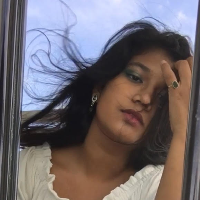Designing Horror Costumes That Are Actually Scary
Designing a horror costume depends on what aspect of fear you want to highlight. The beauty of horror costuming, in my opinion, is the ability to give a physical form to irrational fear. We know there’s nothing in the dark, but what if there is? Something dark and hooded, concealed in the shadows?
That’s just it, something dark and hooded, something unclear, something barely visible, is the way to embody a fear of darkness. We often say that we aren’t afraid of the dark but of what’s in it. Well, designing a costume means showing what’s in the dark.
Apply this to as many fears as you can. A fear of heights can translate into a terrifyingly tall ghost, a fear of change can be conveyed by mixing pieces of clothing from different eras, regrets can be seen in the twisting of infantile imagery like dolls and clowns, and a fear of failure might be embodied by tattered clothes and aged features (not based on personal experiences, of course).
What can we use to embody fear?
Think of the most common horror tropes, ghosts in white, twisted bones and gore, labyrinths, monsters, and more. They all employ symbolism in their costuming and character design to send that shiver down your spine.
Here are the tricks to help you design a scary costume:
1) Distortion
By concealing aspects or blurring the parameters, you can amp up the fear factor of your costume. We don’t know exactly where it starts and where it ends. This lack of definition brings out multiple fears. We hate not knowing, and are naturally afraid of uncertainty. We fear what is concealed.
An abundance of flowing fabric distorts the figure and can even act as a veil. We’re not sure of what we’re seeing. This feature of fabric has been used to trick the eye in magic shows. This is why we often see full-length gowns and robes in horror costumes. Such is the case with Olivia Crane’s costume in The Haunting of Hill House as she slowly gets possessed. Another example is that of the woman in black, a veiled gothic figure symbolizing death and mourning. She has been paralleled in pop culture with the ‘Bride in black’ in the Insidious franchise.
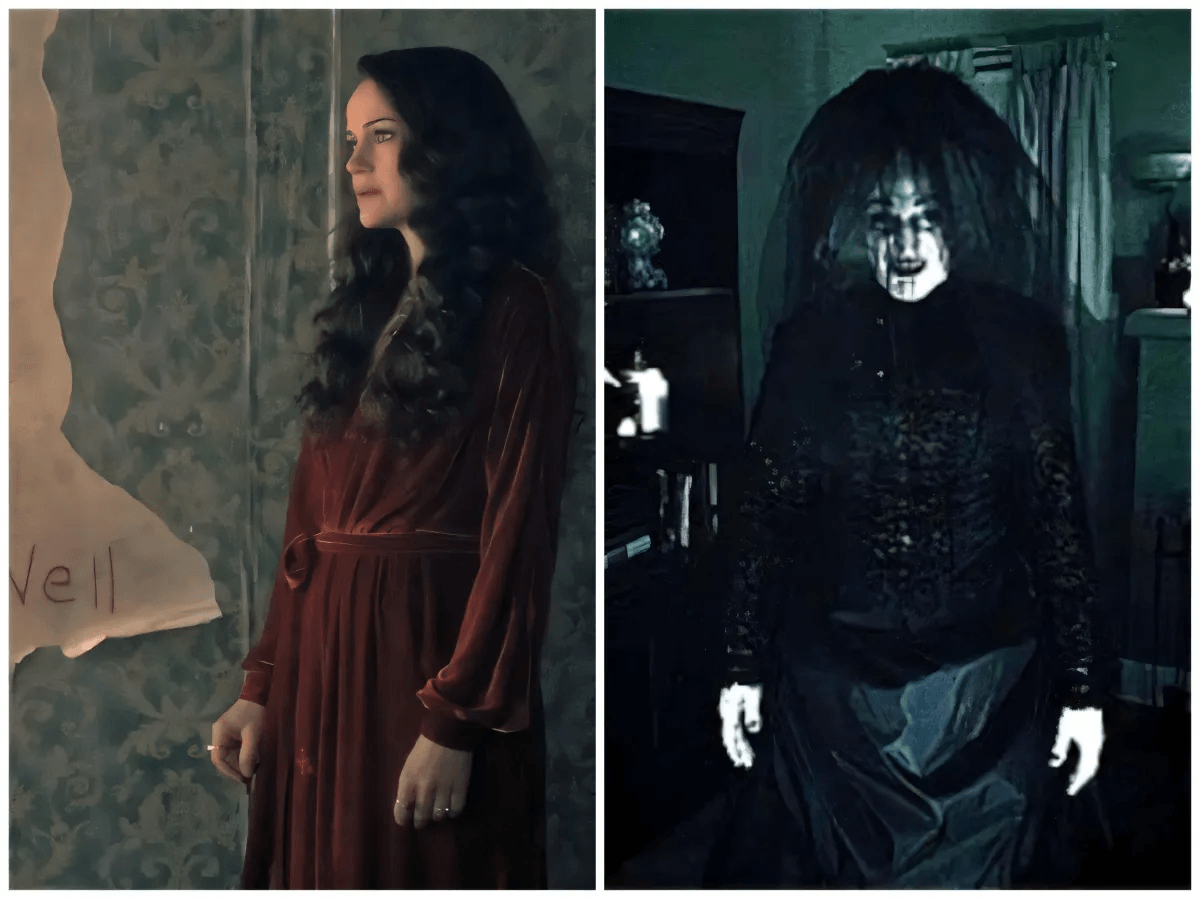
Fabric obstructing our vision also brings forward our fear of getting lost. Fabric can be used as a web or net, emphasizing our fear of entrapment, getting tangled, and of being restrained. You can combine these fears with a fear of concealment in a half-covered, partially visible costume moment. Such as the scene in The Conjuring where we see the character of the mother covered and tied in a sheet only for the witch Bathsheba to appear from within. The fabric was used as a prop here, but can easily be integrated into costuming.
Another element of distortion can refer to the complete erasure of features. In this case, the viewer literally cannot tell anything about the character. We see this at play with the use of morph suits in costuming. It also makes the character look 2 dimensional and otherworldly. A recent example of this was the faceless Lady of the Lake in Netflix's Haunting of Bly Manor.
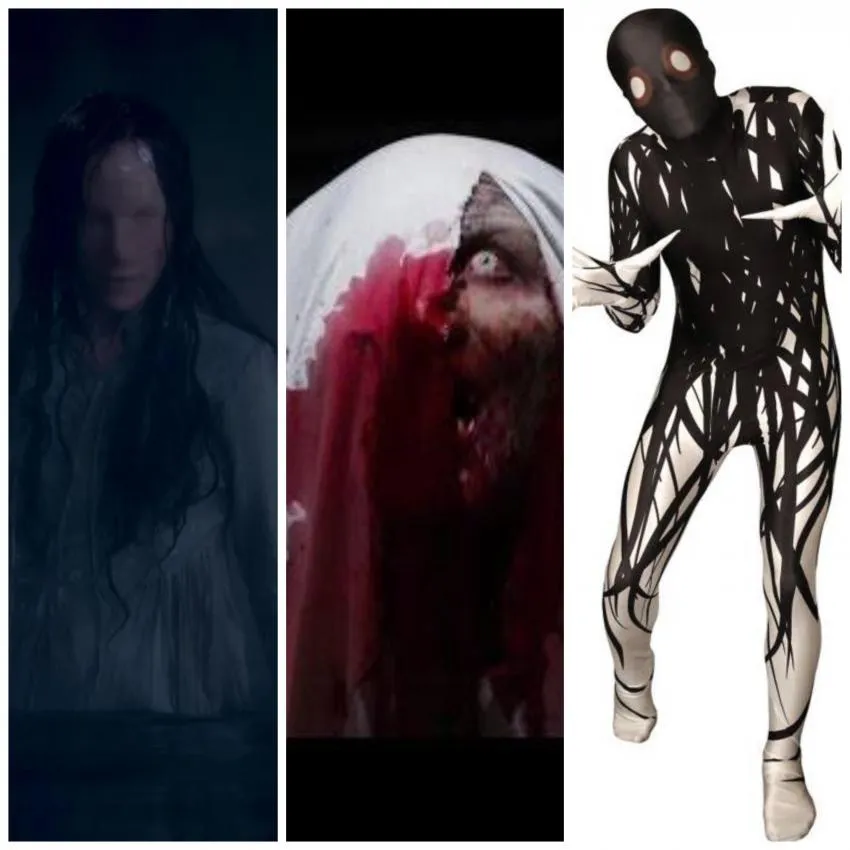
2) Defamiliarization
Defamiliarization is a literary practice that takes commonplace, well-known items and speaks of them as alien, unfamiliar, or even strange. This warps your perception of familiarity.
One simple way to execute this is to take a well-known concept and add a sinister layer to it. For example, the possessed demon nun from The Nun and the clown from It. In these examples, we take known elements but make them feel unsafe and evil.
Another horror trope that relies on defamiliarization is the use of mirrors and reflections. There’s nothing creepy about them unless you speak of mirrors as a portal that turns the world upside down or shows you a false reality of the world.
The exaggeration of features can serve as a way to defamiliarize the costume, by playing with scale. Enlarging or elongating one key feature or body part out of proportion is a great way to make your character's costume look creepy. A classic example would be Slender Man, with his terrifying long frame. Another example is Freddy Kruger with his arms extending sideways in The Nightmare on Elm Street.
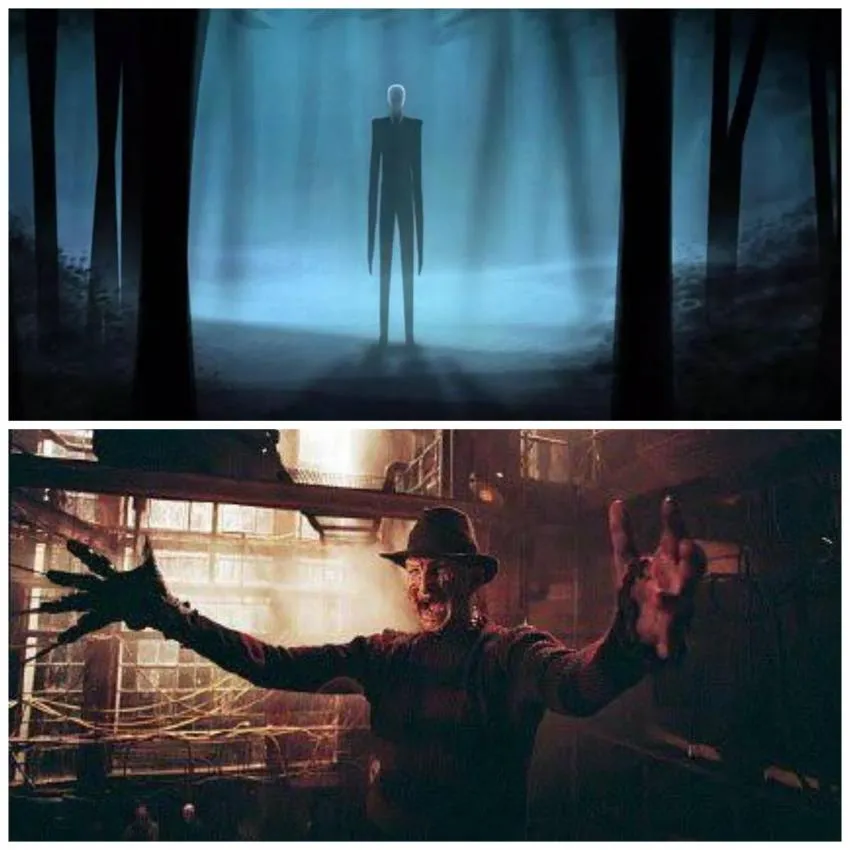
The exaggeration of one key feature makes your character look humanoid, with a layer of creepy. Extended limbs increase the fear of getting caught and grabbed. Incredibly large mouths bring forward nightmarish, snake-like imagery. Large eyes can make your horror character seem more intimidating and angry. A more subdued yet popular use of this technique is in the classic portrayal of witches, with extended, hooked noses and long, talon-like fingers.
This can be emulated easily with props like stilts and long sleeves. Makeup and prosthetics find importance in this section and can be used to trick the eye.
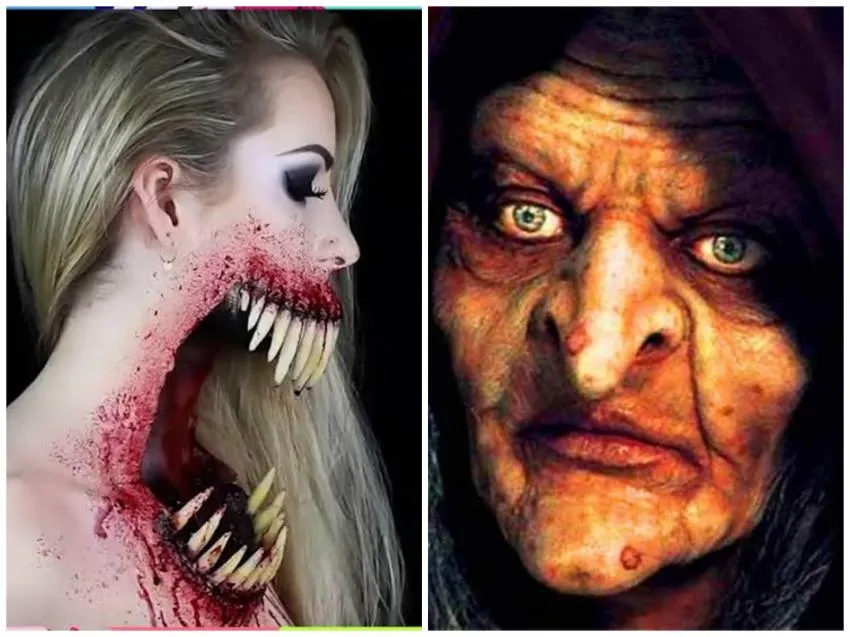
3) Uncanny Valley
Uncanny valley is a concept used towards realism in robotics and animation, which suggests that realism looks natural and humanoid only to a certain point, crossing which, realism brings about a sense of uneasiness and strangeness.
The idea of something looking too perfect or too calm can definitely be applied to horror. Imagine your own safe home, but everything has been shifted an inch to the left. It looks the same but feels a little off.
You can emulate this in costumes by putting entirely too much effort into some aspects of your costume, contrasting it with the rest. For example, you can make the eyes very detailed and too bright, while the skin surrounding it can look pale and dead. We see this in the form of an aesthetic in Tim Burton’s character designs. You can also enter Uncanny Valley territory by adding moving elements that are too slow for comforts, such as contoured joints and rigid eye movements.
According to an article in The New York Times, a classic way of using uncanny valley in horror costumes is through doll costumes and overly detailed masks. For example, the Owl Mask from the thriller, Stage Fright, the surgical mask from Eyes Without a Face, and the smiling masks from The Purge. All of these masks combine hyperrealism and detail or show real features combined with eerily fake masks that look too smooth.
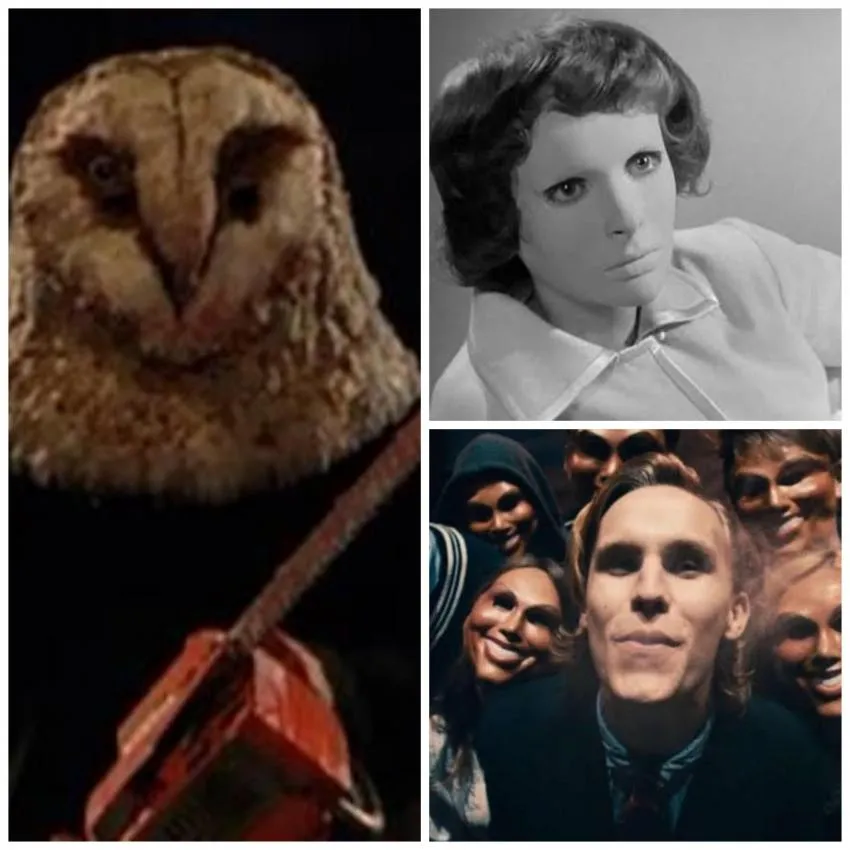
In conclusion, to create your horror costume, figure out what type of fear you want to evoke and apply these methods to the same. You'll notice that no costume fits neatly into just one category. Slender man combines distortion, erasure and exaggerated features, morph suits with detailed faces combine distortion with the uncanny valley.
It is also worth noting, that costumes alone will not create the full horror experience, and must play along with the setting it is in. So, keep that in mind when designing, and link it to the emotions you want to portray.
However, if you want to use these methods to create a scary Halloween costume to frighten your friends at a party, you could probably add a good jump scare to get the job done.
Nevertheless, the horror genre has been giving us good spooks for years and we clearly have a lot to learn from their designers and apply these methods to our own character and costume designs.
Opinions and Perspectives
Interesting how simple elements like fabric can create such powerful fear responses
The concept of distortion through fabric is brilliant. No wonder ghosts are always in sheets
This perfectly explains why I find those old black and white horror films so effective
Anyone else think modern horror relies too much on jump scares instead of costume psychology?
The article made me realize why I find certain costumes more unsettling than others
Really interesting how fear of the unknown plays into costume design
Just ordered some flowing black fabric for my Halloween costume after reading this
I've always found partially visible things scarier than fully revealed monsters
The point about dolls and clowns representing twisted childhood imagery is fascinating
Great breakdown of horror costume elements, but what about sound effects?
Really makes you think about why certain images stick with us after watching horror movies
Wonder how these principles would apply to creating scary costumes for children's theater
As someone with anxiety, the explanation of how costumes embody different fears really resonates
The part about masks and hyperrealism really explains why I find The Purge so unsettling
I've been doing Halloween makeup for years and this article just gave me so many new ideas
Anyone else think Japanese horror costumes deserve a mention? They nail these concepts
The bit about shifting everything an inch to the left is going to haunt me now
Interesting read but I feel like cultural differences in what people find scary should've been addressed
The idea of mixing clothing from different eras to represent fear of change is brilliant
I'm studying film and this article perfectly explains concepts we've been discussing in class
My kids would love this breakdown. They're always asking why certain things are scary
Anyone else think The Nun is a perfect example of defamiliarization? Such a brilliant design
This whole article gave me the creeps, especially the part about the Lady of the Lake from Bly Manor
Would love to see more examples of how these principles apply to non-supernatural horror costumes
I've always wondered why dolls are so creepy. The uncanny valley explanation really clears that up
The Tim Burton reference makes perfect sense. His character designs always sit right in that uncanny valley
I feel like modern horror relies too much on gore and jump scares instead of these psychological elements
The part about exaggerated features reminds me of why I found Slender Man so terrifying when it first came out
What about the color psychology? I notice most effective horror costumes use specific color palettes
I work in costume design and these principles are spot on. We used similar techniques for our theater's production of Dracula
Not sure I agree with everything here. Sometimes simple is scarier than all these complicated design elements
The mirror reflection concept reminds me of my childhood fears. Still can't look in mirrors at night
Great article but I think it missed discussing the importance of sound design working with costumes
I tried making a horror costume last Halloween using some of these principles. The flowing fabric definitely worked wonders
The examples from Hill House and Insidious really drive home the points about costume design
This article helped me understand why I'm so creeped out by those faceless mannequins in department stores
Really interesting point about defamiliarization. Never thought about why evil nuns and clowns are so terrifying until now
Actually, I disagree about the fabric part. Blood and gore are way more effective at creating genuine fear. Just look at modern horror movies
The part about distortion using fabric really makes sense. I always found those flowing ghostly figures much scarier than gore
I love how this article breaks down the psychology behind scary costumes. The uncanny valley concept especially fascinates me
